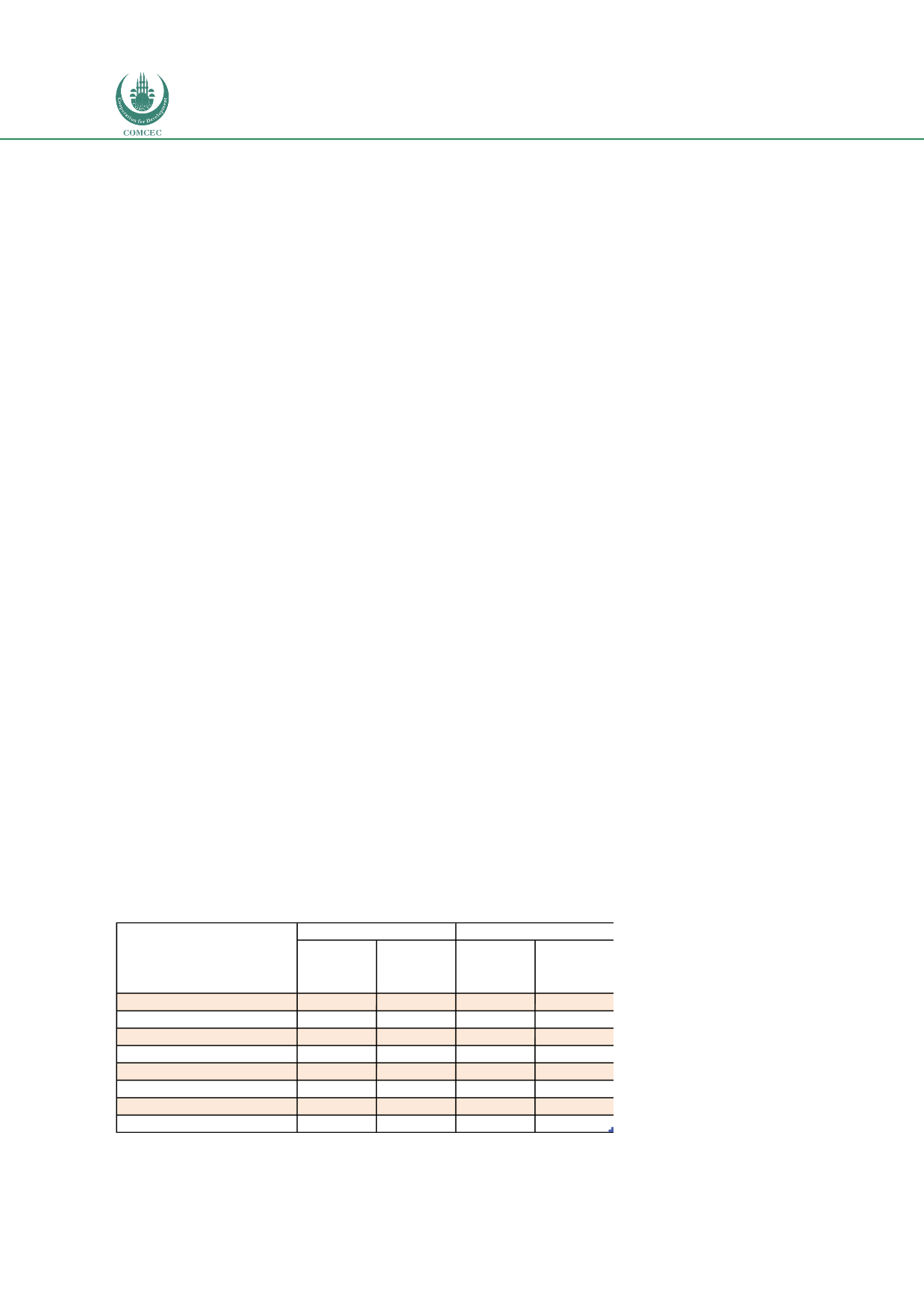

Improving Transnational Transport Corridors
In the OIC Member Countries: Concepts and Cases
66
4.2.2.
Economic factors
OIC has a diverse economic structure. According to Islamic Development Bank (2011) the OIC
member countries “exhibit high levels of heterogeneity and diversity in their economic
structure, performance, and income. The OIC countries are well-endowed with potential
economic resources, especially in the fields of agriculture, land, energy and mining, and human
resources, and they form a large strategic trade region that can be subdivided into three
regional groups: Sub- Saharan African countries, Asian countries and MENA countries. Africa
should broaden its economic base and not remain so dependent on commodity exports for its
growth; financial crisis had spread to Africa through the impact on its commodity exports. A
lesson to the continent from the global crisis had been that job creation had suffered from
volatility in the commodities sector”
The promotion of economic growth through the improvement of trade competitiveness is the
chief objective of the development of transport corridors. Therefore Islamic Development
Bank (2011) views “analysis of existing trade patterns (exports, imports, and transit) among
the OIC member states and between the OIC member states and the rest of the world as a
prerequisite to identify and prioritize transport corridor initiatives.”
Financing, key in establishing transport corridors, has been discussed in sections 2.5.1 and in
2.7.1, and is fully related to ownership. In the Transport and Communications Outlook 2016
(COMCEC, 2016) concludes, “Unfortunately, the OIC countries generally fail to achieve most of
the preconditions” for a successful PPP implementation. “A successful implementation of a PPP
project requires; (1) political and economic stability, (2) sound legal framework, (3)
institutional capacity, (4) political commitment and support, (5) transparent and competitive
tender procedures free from corruption, (6) an organized and developed domestic private
entrepreneurship (including financial institutions and construction companies), and (7) public
acceptance and support.”
For the OIC countries, the total times taken and costs of exports are higher compared to the
rest of the World except Sub-Saharan Africa, as shown in
Table 7.Reducing customs and
border crossing fees is difficult as at the country level, states rely heavily on tax and revenue
collected by customs.
Table 7: EoDB in the World’s Regions in 2016
Source: World Bank
Sub-Saharan Africa
103
583.4
92.6
229.6
Latin America & Caribbean
63.5
526.6
55.7
110.5
East Asia & Pacific
57
401.7
73.3
131.8
South Asia
59.4
376.1
78
182.6
Europe & Central Asia
28
195
26.9
110.7
Middle East & North Africa
64.4
459.6
77.4
261.3
OECD high income
12.4
149.9
2.6
35.7
OIC Average
73.4
492.3
80.4
209.5
Region
Border Compliance Documentary Compliance
Time to
export
(hours)
Cost to
export
(USD)
Time to
export
(hours)
Cost to
export
(USD)
















